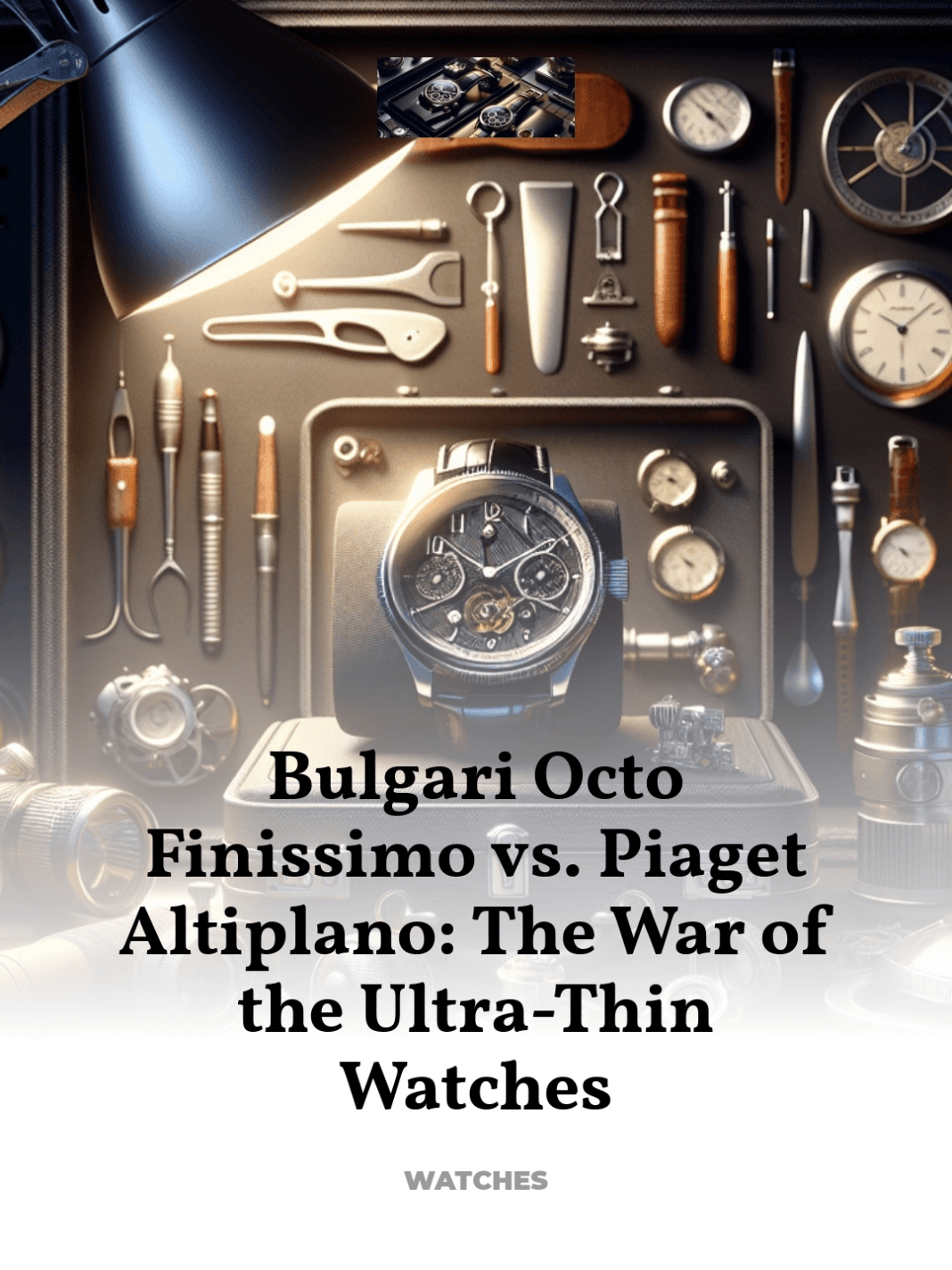Which Maison Dominates the World of Ultra-Thin Horology?
The quest for the ultimate ultra-thin watch has become a battleground of innovation, precision, and artistry between two horological giants: Bulgari and Piaget.
- Introduction to Ultra-Thin Mastery
- Exploring Bulgari Octo Finissimo
- Unveiling Piaget Altiplano
- Technical Comparison: A Closer Look
- Cultural Impact and Iconic Status
- Final Verdict: Which Brand Reigns Supreme?
Introduction to Ultra-Thin Mastery
The allure of ultra-thin watches lies not just in their sleek and elegant profiles but also in the remarkable technical challenges they overcome. Crafting such timepieces requires not only advanced engineering but also an intrinsic understanding of aesthetics and comfort. In this realm, two names stand out: Bulgari with its Octo Finissimo and Piaget with the Altiplano. Both have pushed the boundaries of what is possible in the watchmaking world, setting records and captivating collectors and enthusiasts alike.
Exploring Bulgari Octo Finissimo
Bulgari, a name synonymous with luxury and design, entered the ultra-thin watch market with a clear vision. The Octo Finissimo, launched in 2014, is a testament to Bulgari’s commitment to excellence and innovation. This timepiece is not only a marvel in terms of its slim profile but also reflects a unique geometric aesthetic that challenges traditional watch design.
- Design Philosophy: The Octo Finissimo features a distinctive octagonal case with a thin profile that seamlessly blends classic elegance with modern minimalism.
- Innovative Materials: Bulgari employs materials like sandblasted titanium and ceramic, enhancing the watch’s lightweight feel while maintaining a robust framework.
- Record-Breaking Achievements: Over the years, the Octo Finissimo has broken multiple records for thinness, including the thinnest automatic watch and the thinnest tourbillon.
The Octo Finissimo’s journey reflects Bulgari’s daring approach to redefining the limits of horological engineering and design aesthetics.
Unveiling Piaget Altiplano
Piaget has long been revered for its ultra-thin watch designs, with the Altiplano line embodying the pinnacle of this expertise. Since its debut in 1957, the Altiplano has stood as a paragon of minimalistic elegance and technological mastery.
- Heritage and Refinement: The Altiplano series is built on a legacy of ultra-thin development, highlighted by the 9P and 12P movements, some of the thinnest in the world.
- Sleek Aesthetics: Known for its understated design, the Altiplano uses a simple dial, often adorned with baton markers and a subdued palette, emphasizing its classic appeal.
- Material Mastery: Piaget utilizes gold, platinum, and even meteorite, offering a luxurious yet tasteful wrist presence.
The Altiplano’s consistent focus on ultra-thin technology combined with elegant design cues has solidified its status as a benchmark in the category.
Technical Comparison: A Closer Look
When comparing the Bulgari Octo Finissimo and the Piaget Altiplano, it is essential to delve into their technical specifications and innovations. Both brands have developed proprietary movements that have set records for thinness while enhancing performance and reliability.
- Movement Innovation: Bulgari’s use of a peripheral rotor in its automatic models allows for a reduction in movement thickness. Piaget, on the other hand, often employs manual winding to achieve slimness, focusing on the purity of traditional watchmaking.
- Case Engineering: Both brands have mastered the art of case construction to support ultra-thin movements without compromising durability or aesthetic appeal.
- Performance: Despite their slim profiles, both the Octo Finissimo and Altiplano boast impressive power reserves and durability, suitable for everyday wear.
This technical prowess showcases how both Bulgari and Piaget have not only embraced the challenge of ultra-thin watchmaking but have continuously innovated to lead the field.
Cultural Impact and Iconic Status
The influence of the Bulgari Octo Finissimo and Piaget Altiplano extends beyond the watchmaking industry into the broader realms of fashion, design, and popular culture. Both models have been spotted on the wrists of celebrities and style icons, contributing to their status as symbols of luxury and sophistication.
- Fashion Integration: The sleek design of these watches makes them a favorite among fashion enthusiasts who appreciate their adaptability and understated elegance.
- Media Appearances: Both watches have been featured in various lifestyle magazines and have appeared in films and television shows, cementing their place in popular culture.
- Collector Community: The technical achievements and aesthetic qualities of the Octo Finissimo and Altiplano have garnered a dedicated following among watch collectors and connoisseurs.
The cultural resonance of these timepieces highlights their impact not only as functional objects but also as artistic creations.
Final Verdict: Which Brand Reigns Supreme?
In the battle for dominance in the ultra-thin watch market, both Bulgari’s Octo Finissimo and Piaget’s Altiplano offer compelling arguments. Bulgari impresses with its bold design and record-setting innovations, while Piaget appeals with its classic elegance and horological purity.
The choice between these two titans may ultimately come down to personal preference in style and philosophy of watchmaking. Whether one values the avant-garde approach of Bulgari or the timeless refinement of Piaget, both brands continue to push the boundaries of what is possible in the pursuit of creating the perfect ultra-thin watch.
For further exploration of these remarkable timepieces, visit authoritative sources such as Hodinkee’s extensive watch archives.



